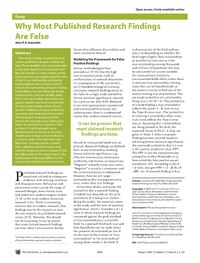
Photo from wikipedia
When the clinical nurse specialist is interested in conducting a study to determine causality, but it is either not feasible or not ethical to conduct a randomized controlled trial (RCT),… Click to show full abstract
When the clinical nurse specialist is interested in conducting a study to determine causality, but it is either not feasible or not ethical to conduct a randomized controlled trial (RCT), a quasi-experimental (QE) design should be considered. Although the strength of evidence for the QE design is less than that of the RCT, it is an improvement over correlation designs, as correlation cannot establish causation. However, planning and conducting a QE study are more complex than planning and conducting a correlational study, and few nurses received sufficient research content in undergraduate or graduate programs to make them feel comfortable or competent in this area of research. Thus, the purpose of this article is to explain the differences between experimental and QE research, identify the advantages and disadvantages of QE research, discuss QE designs used most often in nursing research, and provide information related to addressing the internal threats to validity associated with various QE designs.
Journal Title: Clinical Nurse Specialist
Year Published: 2022
Link to full text (if available)
Share on Social Media: Sign Up to like & get
recommendations!